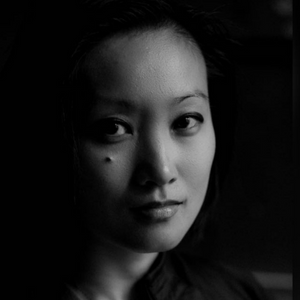Asian Americans: Held At Outsider Status
By Aimee Hansen

Image via Shutterstock
For the first time in history, three Asian American women are in the Senate during this 115th Congress – Senator Mazie Hirono (Hawaii), Tammy Duckworth (Illinois), and Kamala Harris (California). When elected in 2012, Senator Hirono was the first Asian American woman elected to the Senate. Harris is also the first Indian-American to serve in the Senate.
When it comes to Forbes and Fortune power rankings, Indra Nooyi is the only Asian American woman on the lists – #2 in Fortune’s 2016 50 “Most Powerful Women in Business” and #14 in Forbes “The World’s 100 Most Powerful Women.” But as theglasshammer highlighted last year, Forbe’s America’s Self-Made Richest Women tells a different story about Asian American women at the helm: they make up 15% of this ranking.
According to a Girls in Tech survey of 582 women, Asian American women are the least likely to hold leadership positions in tech. This echoed the findings from the previously highlighted Hidden In Plain Sight tech diversity study by Ascend.
The Asian effect is 3.7X greater than the gender effect on creating a ceiling. Women were 42% less likely than men to hold executive roles. But Asians were 154% less likely to hold executive roles than Caucasians. Asian-American women, in the intersection of both, faced the greatest gap in likelihood to hold executive positions.
Persistent Asian-American Stereotypes
As shared in Sparks, Malini Johar Schueller, Department of English professor at University of Florida says that Asian American women are often seen as “perpetual foreigners,” never truly being seen as a “American” (or insiders), but rather as “abnormal foreigners” (outsiders). For Schueller, this means having to “qualify” herself to teach in her department, even to students.
A recent article in Harvard Business Review suggests that two intersecting stereotypes are at the crux of the general Asian-American leadership gap: “Stereotypes about Asians being highly competent can make Asians appear threatening in the workplace, and stereotypes about Asians lacking social skills make them seem unfit for leadership.”
Studies have revealed that those who held the stereotypes that Asians were highly competent felt admiration and envy. Those who held the stereotypes that Asians lacked social skills felt hostility and fear. People who are emotionally reacting to stereotypes they hold are less likely to have interest in interacting with Asian-Americans. And of course, personal interaction is what can challenge stereotypes.
Leaders who hold stereotypical narratives about Asian Americans would hold them at a distance, and potentially at a distance from leadership.
As stated in HBR,
“The authors of both papers theorized that whites are threatened by the ‘unfairly high’ levels of competence possessed by Asians and essentially use the stereotype that Asians lack social skill as a pretext for discrimination.”
In The Asian American Achievement Paradox, professors of sociology Jennifer Lee and Min Zhou challenge ‘the narrative of Asian American “exceptionalism”’ and the assumption that Asian American educational achievement is solely reflective of cultural values. The authors illustrate that a confluence of hyper-selectivity in immigration laws, institutions, and cultural success frames have promoted high achievement among certain Asian American groups.
The study asserts that while stereotype promise (“the boost in performance that comes with being favorably perceived and treated as smart, high-achieving, hardworking, and deserving students”) may help Asian American students, it also re-creates stereotypes that hinder at the leadership level.
Broken Leadership Stereotypes
As argued in HBR, we tend to expect workers to be “competent, intelligent and dedicated,” but attach further qualities to leadership (charismatic, socially-skilled, authoritarian) that do not match up to stereotypes we hold about Asian Americans.
But it’s not only the mis-match between these two that is flawed when it comes to elevating Asian Americans into leadership. The archaic leadership stereotypes themselves are broken.
“It is time to rethink the ‘good leader’ prototype of being masculine, dictatorial, and charismatic,” states the HBR authors. “Evidence shows that neither men nor women prefer to be treated in an aggressive fashion, yet that model persists as a valid expectation for leadership.”
Cultural values can also mean that Asian Americans are less inclined to the self-promotion that is encouraged by Western norms. However, those who break the stereotype of being deferential face the double-bind of being perceived negatively.
Bridging the Distance
Recently, whitewashing in films – casting white actors to tell Asian stories – has received growing awareness and protest, while Asian American actors find only one-dimensional, stereotype-reinforcing roles available to them.
Thai American actor Pun Bandhu told the Guardian. “When a white actor gets the role, it denies us our bodies and it denies us our voices.”
More and more, we are being asked to consider how we are each complicit within the net of our culture in denying the bodies and voices of others through our implicit biases.
Harvard social psychologist Mahzarin R. Banaji, creator of the the implicit bias test, spoke in a conversation with Krista Tippett about being challenged by her own test when it comes to making associations that go against the socialized norm: “And when I can’t do it, I understand. I understand that I’m a product of a culture where the culture has now gotten into my head enough that I am the culture. I cannot say, ‘There’s a culture out there. It’s biased, not me.’ Consciously, that’s true. But not at this other level.”
When people gather around the meeting room or even the Senate, they all come with their stereotypes and hidden biases, but nothing is more important than the interaction that helps to break down the ideas we hold of each other, collectively.
Three Asian American women in the Senate may not seem like a lot, but each woman is helping to change the face of leadership.











